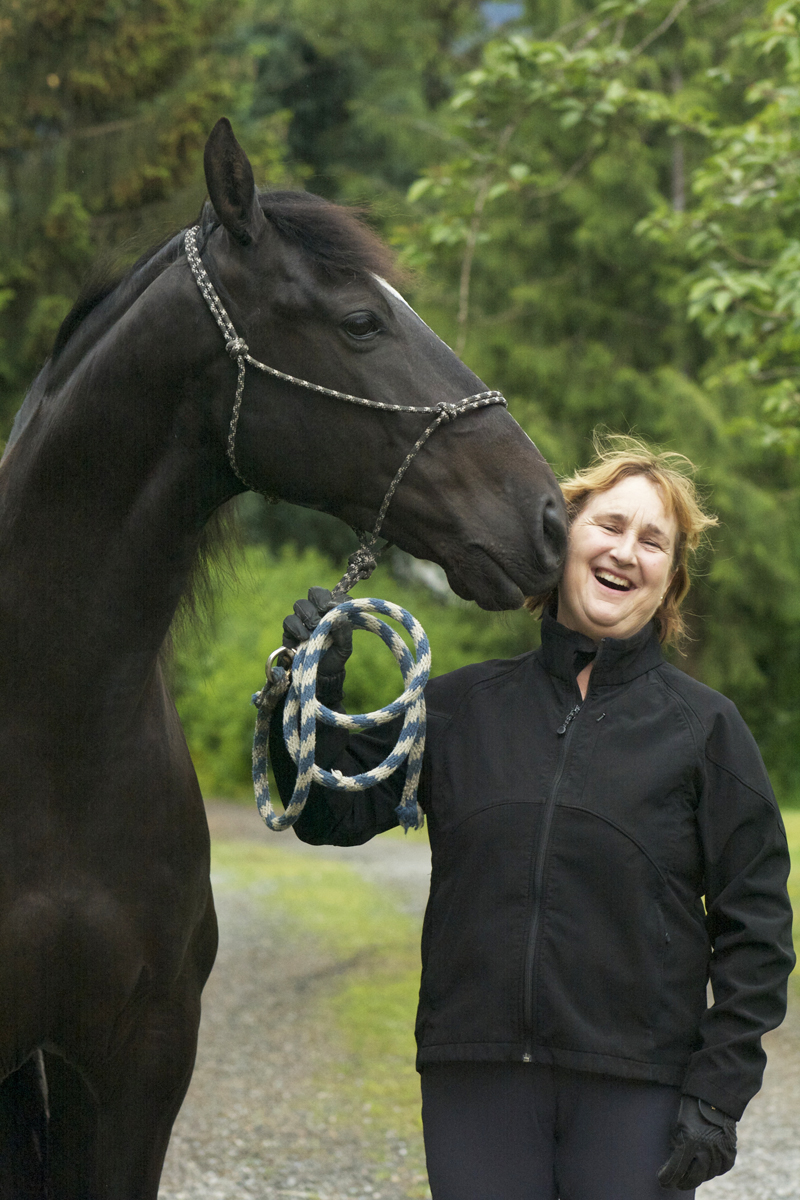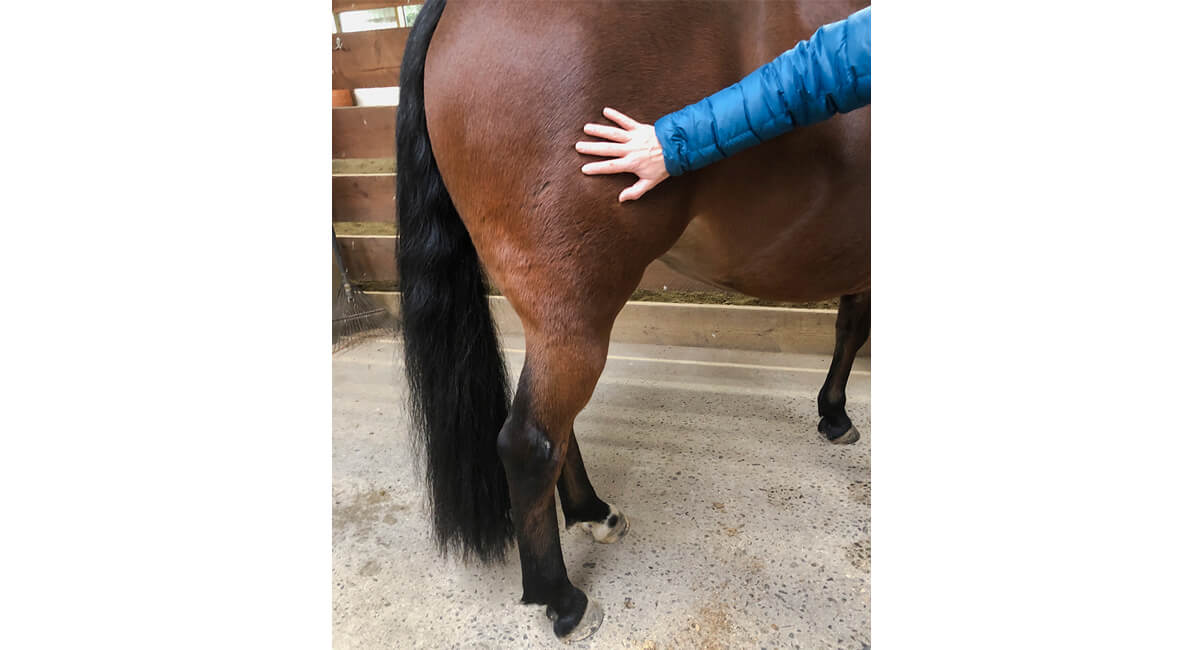Four Tips for Handling Your Horse’s Feet without Stress
Imagine how it feels for a prey animal like a horse to have their foot held and manipulated by a predator species like a human. It’s truly amazing they ever let us touch their feet! If we come to the horse from a place of understanding we’ve already set ourselves up for success.
Most horses learn to appreciate (not merely tolerate) humans handling and cleaning their feet. When hoof cleaning, trimming, booting, and shoeing are done with consideration for the horse’s physical comfort and balance issues, horses feel the benefit of what people are doing and don’t resist us.
It’s imperative that we teach horses correctly from the beginning. Pain or fear produced by rough handling from their handler (or farrier) will cause stress in horses they will never forget. Retraining is harder than doing it right at the start. Remember, horses are large, strong, flight animals and we must be extremely careful while working with them—and especially with their feet. If you are having problems, please hire a professional trainer to help you. Do not expect your farrier to do this work for you. His/her job is to trim or shoe your horse, not train it. The steps below are some considerations for handling horse’s feet and legs.
1. Teach your horse to ground tie.
All horses should have a decent “whoa” without being held or tied. This doesn’t mean you can go have lunch and your horse will still be there when you get back; it means they are trained to allow you to move around them, groom them, blanket, and pick out their feet without needing to be held or tied. It demonstrates that the horse trusts you, they’re with you, and they accept (and hopefully welcome) your touch. Trust takes time and patience, slow and steady work, but when earned it pays off by producing a horse who is safe and reliable. All my horses allow me to clean and tend to their feet without having to be haltered and tied.
2. Teach your horse to accept (and welcome) your touch on their legs and feet.
Many horses, especially young or unhandled ones, will be quite reactive when having their lower legs touched. Begin by brushing or stroking your horse’s legs from top to bottom with a light, relaxed touch, and/or a soft brush. If they are worried about this, don’t move on to picking up the feet. Be extremely careful. A horse can kick you easily by swinging their haunches toward you, so stay close to your horse and face the horse’s tail with your shoulder perpendicular to their shoulder for front legs and their ribcage for hind legs.
If your horse is very nervous about having their legs touched, use a long whip, like a lunge whip, to stroke and gently touch the legs. If the horse reacts by kicking, continue to calmly stroke the legs, stopping when the horse is calm.
3. Shift your horse’s weight off the leg you want to pick up.
No matter your strength, it’s unlikely you can lift your horse’s weight or even a portion of it. The horse must hold his own weight up on three legs. Using the flat of your hand on either the shoulder (for a front leg) or the haunches (for a hind leg) ask your horse to shift its weight onto the opposite leg before asking them to pick up their hoof. If they shift it back, ask again, until they understand they are to keep their weight away from you even after you remove your hand.
4. Use a verbal cue and a physical one.
To pick up a front foot, stand beside your horse’s shoulder facing his tail, shift his weight with the hand closest to the horse and run your other hand down his leg. Tickle the tendons below the knee and use a verbal cue like, “foot” at the same time. When your horse picks up his foot, hold it by the hoof, not the ankle, and then gently place it back down (don’t drop it).
Use the same technique for hind feet: stand beside the horse’s hindquarters and face backwards, shift the weight, run your other hand down the haunches to the tendons below the hock, tickle, verbal cue, and pick up the foot replacing it gently down when you’re finished.
Eventually, you should only have to shift the weight and say “foot” and the horse will pick his foot up for you. Remember to praise your horse for the smallest effort.
Having a relaxed, trusting horse who allows its feet to be manipulated is an essential skill all horses need for us to care properly for them. Take your time and train it right. Your horse (and your farrier) will appreciate your efforts!
See this article in the December 2024 Online Digital Edition:
December 2024

Kim Roe grew up riding on the family ranch and competed in Western rail classes, trail horse, reining, working cow, and hunter/jumper. She trained her first horse for money at 12 years old, starting a pony for a neighbor.
Kim has been a professional dressage instructor in Washington state for over 30 years, training hundreds of horses and students through the levels. In recent years Kim has become involved in Working Equitation and is a small ‘r’ Working Equitation judge with WE United.
Kim is the editor of the Northwest Horse Source Magazine, and also a writer, photographer, and poet. She owns and manages Blue Gate Farm in Deming, Washington where she continues to be passionate about helping horses and riders in many disciplines.

